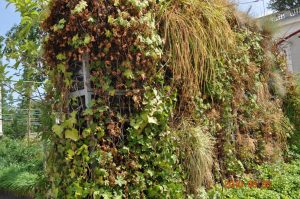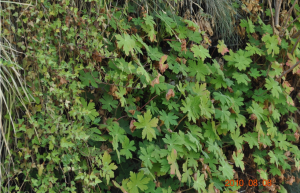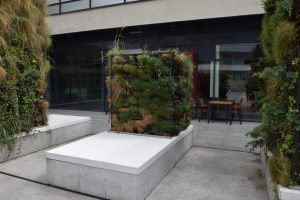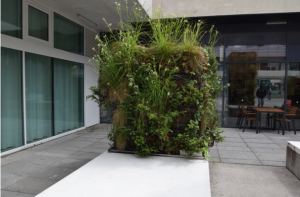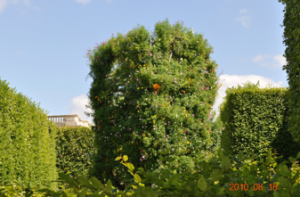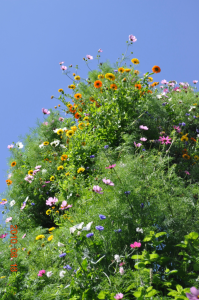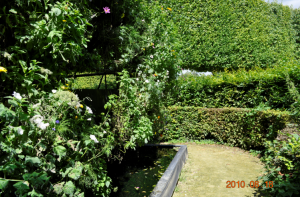“Green gabion walls” are simple structures made of gabions (wire baskets) made of galvanized metal mesh and filled with uncrushed rock or stone but with a soil substrate in which the plant grows.
The gabion walls can be free-standing as well as mounted along vertical surfaces. They require flooring on cast concrete plinths and foundations.
Greening of the gabion:
1) Line the gabion, made of galvanized mesh, with geotextile to protect the soil substrate against spilling out.
2) Fill the gabion with a soil substrate.
3) Make small incisions between the meshes in the geotextile, plant the seedlings of the plants greening the “vertical garden” into them.
Application:
At the walls of objects, after they have been protected against moisture. As free-standing items – screens, fences.
Disadvantages:
The design is low cost, but it takes up a lot of space and is very heavy.
(…)
Technical drawing of the gabion.
Examples of solutions include:
Paris – Bagattele Park
A simple, slow-standing maple wall at the Bagatele Park (Parc de Bagatelle) ) in Paris. Automatic watering.
-
“a free-standing gabion wall in the Bagatele Park, Paris.” Author: Agnieszka Dudzińska – Jarmolinska “Vegetation greening the gabion wall located in Bagattele Park, Paris” Author: Agnieszka Dudzińska – Jarmolinska 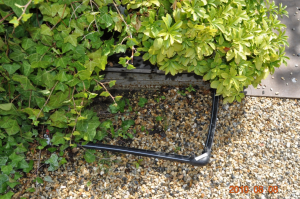
“Gabion wall irrigation system – Bagatele Park, Paris” Author: Agnieszka Dudzińska – Jarmolinska
London Paradise Park children’s Center
The project was developed in collaboration with the DSDHA architectural studio and Marie Clark, a landscape architect. Cover plants, climbing plants and shrubs were used to green the wall. The wall was greened with 70 thousand plants – rainwater collected in containers located on the roof of the building was used for irrigation.
Due to the poor care, as shown in the photo, the vertical garden no longer exists.
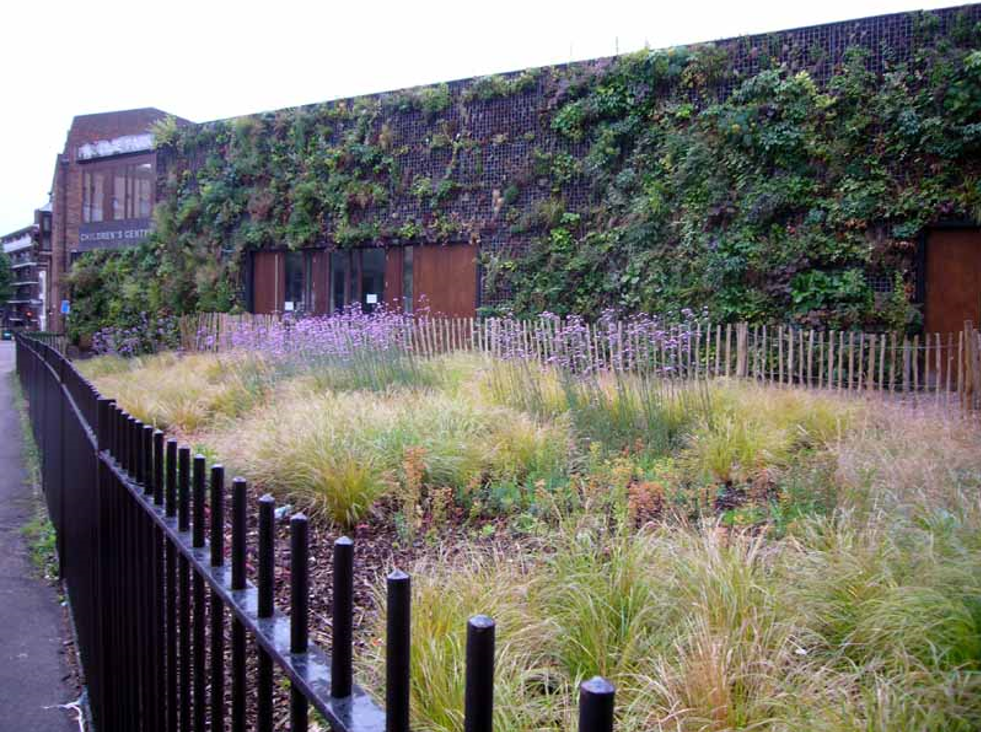
The Zodiak Pavilion, Warsaw.
Single walls are located in front of the Zodiak Pavilion – the Warsaw Pavilion of Architecture in the center of Warsaw.
Individual walls are located in front of the Zodiac Pavilion – Warsaw Pavilion of Architecture in the center of Warsaw.
Destination:
- a) for local communities
An object that is easy to be made. Ready-made gabions or their entire systems are used for construction. Single gabions can be greened or whole walls can be made of them – then they require support in the form of foundations – such solutions are best commissioned to a specialist company dealing with the installation of systems, e.g. gabion fences.
Made of rust- and weather-resistant galvanized steel, the wall is very stable and durable.
- b) professionals
The system requires foundations.
Sample plant species composition:
|
Shaded wall |
Sunlit wall |
|
Aegopodium – Ground elder |
Acaena — Bidi-bidi |
|
Astilbe – False goat’s beard |
Saxifrage – Saxifrages |
|
Epimedium – Bishop’s hat |
Heucherella – Heucherella |
|
Brunnera – Brunnera |
Ibersis – Candytuft |
|
Hosta – Hostas |
Salvia – Sage |
Variations on a theme:
An interesting example is the structure made of metal pipes (and an irrigation system) that forms something like a tower; in 2010, the object was located in the royal gardens of Versailles. The design was probably made in this way:
– the tower’s structure was made of metal tubes – this was a support for plastic (perforated) flexible tubes, which also acted as an irrigation system for the green structure,
– plastic tubes were wrapped with tape containing annual flower seeds. The plants grew according to the rules of hydroponic cultivation, without any soil involvement (all nutrients were supplied with water),
– excess water was collected in the pool where the tower stood, so it could be reused for watering plants.
Literature:
https://www.researchgate.net/publication/320564121_Gabion_Walls_And_Their_Use

